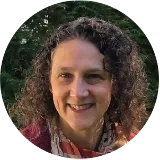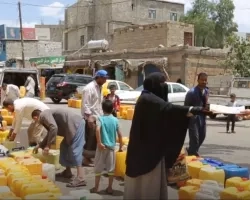Monitoring oil and gas emissions; how to use data from a new NASA mission; combining air pollution data with information on household income – these are just a few of the research topics chosen for support by the NASA Health and Air Quality program area.
The new projects, called Tiger Teams, begin July 2023. Some build on the success of the previous teams, others develop new application areas. The Teams bring together researchers with the people who would be putting NASA Earth science data to use, such as public health departments, state air quality managers, non-profit organizations, and private companies. The Tiger Teams are part of NASA’s Health and Air Quality Applied Sciences Team (HAQAST). Tracey Holloway of the University of Wisconsin-Madison is the team lead for HAQAST.
“This year, we received really strong proposals, and expected to fund four teams. We sent the proposals to volunteer reviewers from health and air quality organizations, who generously gave their time to support this process,” Holloway said. “The reviews were incredibly positive, so NASA increased funding to support an additional team.” She added the teams operate for about 12 to 18 months.
Tiger Team Topics
Oil and Gas Emissions
Industry, local decision-makers, community groups, and air quality experts study the effects of oil and gas emissions. Ted Russell of Georgia Tech leads a team bringing satellite observations to support assessments of oil and gas emissions and exposures. The work leverages collaborative efforts with the Boston-based Health Effects Institute. Russell said, “They are getting some tremendously rich ground-based observations at fine scales, and there’s lots of opportunities to start bringing Earth systems observations and models to bear with a direct link to air quality policy and health.”
Tapping into Using TEMPO
NASA’s recently launched satellite instrument, TEMPO will provide air quality monitoring hourly over northern America. A team led by Arlene Fiore of the Massachusetts Institute of Technology will allow health stakeholders take full advantage of TEMPO data, with a focus on ozone. “Part of why [surface ozone] is so challenging to control is because it’s not emitted directly but forms through atmospheric chemistry,” Fiore said.
Modeling Air Quality
Brad Pierce of the University of Wisconsin-Madison is using satellite data to improve computer models for use by regional and state air quality managers. Expressing their support for the project, the managers shared a letter of support, saying the project promises to “improve the reliability and validity of the modeling systems that we use to support air pollution policy and public health.”
Environmental Justice
Qian Xiao of the University of Texas Health Science Center at Houston will continue to lead the ongoing “Satellite Data for Environmental Justice” team. It addresses needs of the environmental justice community and is part of NASA’s Environmental Justice efforts. In the next iteration, the team is developing more training resources and dedicated support for community projects.
Improving AirNow and Public Health Surveillance
NASA’s contributions to the Environmental Protection Agency’s AirNow dashboard continues. The 2023 effort expands on the work accomplished the 2021 Tiger Team led by Pawan Gupta of NASA Goddard Space Flight Center. Now led by Yang Liu of Emory University, it furthers these efforts towards health applications, particularly to expand use of this data to aid public health asthma surveillance networks.
HAQAST welcomes new collaborations and invites interested participants who would like to get involved with these HAQAST Tiger Team projects or learn more to reach out.
---------------------------------------------------------------------------------------------------









